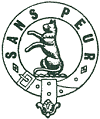Post
by jfw6265 » Wed Oct 20, 2004 10:23 am
The problem with neatsfoot oil is that not only will it rot stitching butit is very easy to apply too much, especially to already dry and old leather. The result is still stiff leather which oozes oil for the rest of its existence. Lexol is a water-based liquid, as are aoto-upholstery treatments and can also rot stitching; one needs to be careful when using them.
For old, antique leather, the best stuff is either the British Museum formula or the US-made Pecard's
antique leather formula. The first is a liquid, the latter a grease or dubbin. Both are designed as preservatives. Neither is really supposed to restore the leather to usable condition; they restore the moisture and oils to the leather, but can do nothing to restore its strength.
For usable leather, I use a light surface cleaning with a slightly damp rag (water and mud are the most common enemies of leather) and Castile Soap, followed by a well-rubbed-in (especially in all folds and bends) coating of Saddle grease (from the local tack/saddle shop), followed by another surface cleaning with a slightly damp rag and glycerine saddle soap. This last removes the dirt-catching grease from the surface of the leather.
CAUTION: This aproach is frequently identified as potentially destructive to old, antique leather as its components are not restorative/preservative. This caution especially applies to thin old leathers, such as the suspension systems in WW II German helmets.
Hope this helps some. Cheers.
<p>


